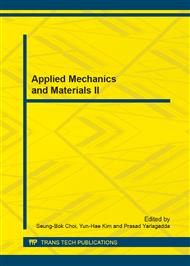p.459
p.466
p.472
p.476
p.481
p.485
p.492
p.499
p.503
Effect of Different Organic Matter Content on Soil Moisture Dynamics
Abstract:
Organic matter plays an important role in soil moisture variation. In order to know the effect of organic matter on soil moisture dynamics, this study compared the infiltration and evaporation of soils with different organic matter content. The results showed that increasing the organic matter content in a certain degree can suppress evaporation and infiltration of soil moisture, and hence improving water use efficiency. When the organic matter content reaches3.2%, effect of suppressing evaporation is most obvious.
Info:
Periodical:
Pages:
481-484
Citation:
Online since:
December 2013
Authors:
Keywords:
Price:
Сopyright:
© 2014 Trans Tech Publications Ltd. All Rights Reserved
Share:
Citation:


